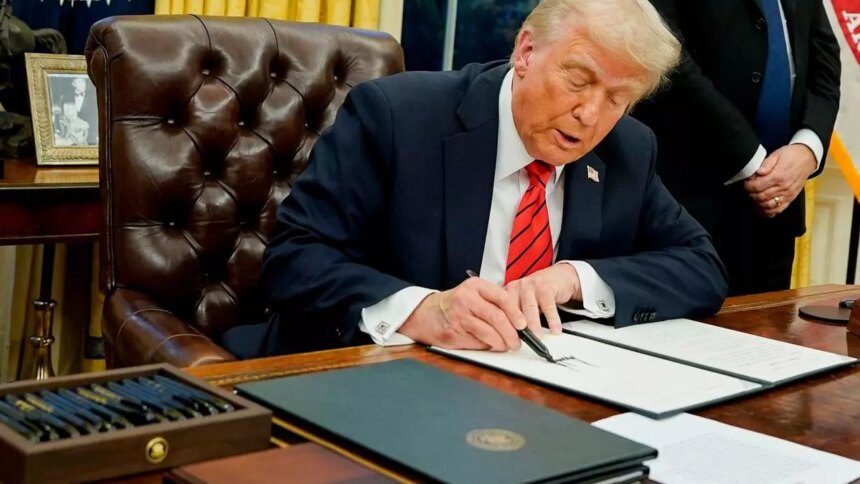President Donald Trump has announced a 25% tariff on steel and aluminium imports, as part of his ongoing efforts to protect important US industries by imposing levies on key allies. This move will affect all US steel and aluminium imports, including those from top suppliers Canada and Mexico, with no exemptions for trading partners. The aim is to address efforts by countries like Russia and China to evade existing duties.
These new tariffs come on top of existing 10% tariffs on goods from China, as well as 25% levies on Canada and Mexico that are currently on hold. Trump’s plan also includes reciprocal duties on other nations. This is the most extensive action taken by Trump to address US trade deficits and generate revenue through international commerce.
Under Section 232 of the Trade Expansion Act, Trump has the authority to impose trade restrictions for national security reasons. This is the same power he used to implement steel and aluminium tariffs during his first term. With these new tariffs, Trump is essentially reviving and expanding on those measures.
The decision to include downstream finished products will have broad price impacts on a wide range of consumers in the US. By targeting products like extrusions and slabs used in various industries, Trump is fulfilling the desires of extreme trade protectionists. Customs and Border Protection will also increase oversight to prevent countries from misclassifying steel products to avoid tariffs.
This move mirrors Trump’s actions during his first term, when he imposed tariffs on steel and aluminium that led to a decrease in US imports of these metals. However, it also sparked retaliatory measures from trading partners like the European Union. During his term, Biden expanded exemptions for major exporters like Canada, Mexico, and Brazil.
The goal of these tariffs is to protect US industries and address trade imbalances, but the broader implications on global trade relations remain to be seen. More updates on this story can be found on Bloomberg’s website.










